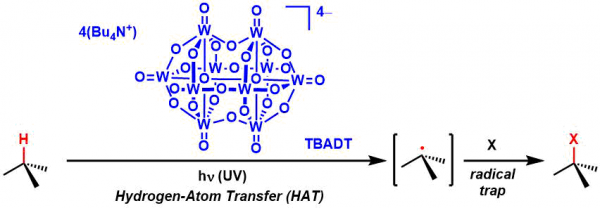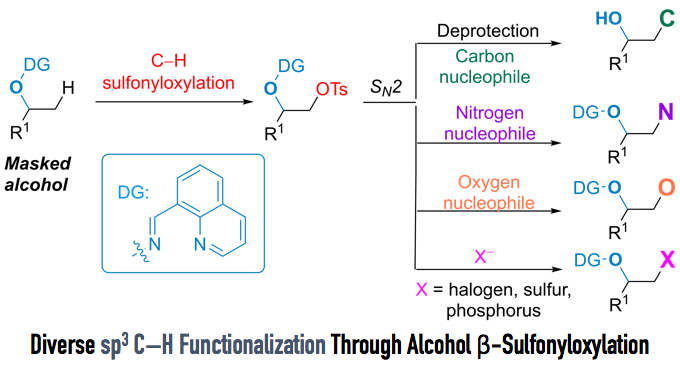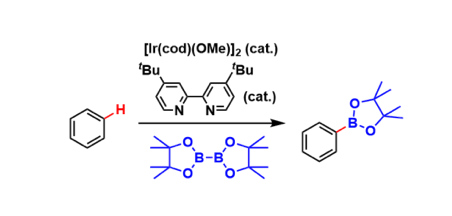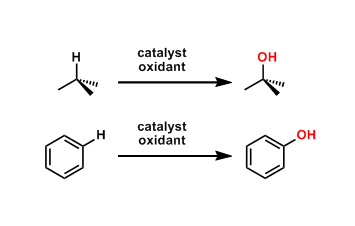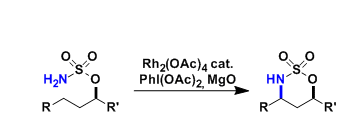Tag Archives: C–H activation
Tungstate Photocatalyst
General Characteristics Tetrakis(tetrabutylammonium) decatungstate (TBADT) is an organic solvent-soluble polyoxometalate compound that can act as a C-H abstraction catalyst under UV-activated ...
Catellani Reaction
General Characteristics The Catellani reaction is a type of three component reaction in which the Mizoroki-Heck reaction and ortho C-H alkylation with alkyl halide occur concomitantly in the presence ...
C–H β-Sulfornyloxylation of Alcohols
Sp3 C–H β-Sulfornyloxylation of Alcohols Carbon–hydrogen bond activation (C–H activation) allows for the transformation of inherent C–H bonds within a molecule to various functional groups without ...
Hartwig-Miyaura C-H Borylation
General Characteristics Iridium catalysts coordinated with electron-donating bidentate ligands promote direct C-H borylation of non-halogenated aromatic rings. Organoboronate compounds are, of ...
Kharasch-Sosnovsky Oxidation
General Characteristics Allylic C-H oxidation can be effected using acylperoxide under copper-catalyzed conditions. The alkene starting materials are usually used in excess. The terminal olefins are ...
Catalytic C-H Oxidation
General Characteristics Catalytic C-H oxidation is a type of C-H activation reactions by which one can oxygenate unreactive C-H bonds, which are present ubiquitously in organic compounds. The C-H ...
Fujiwara-Moritani Reaction
General Characteristics The direct coupling between unsubstituted aromatic rings and olefins in the presence of palladium catalysts is called the Fujiwara-Moritani reaction. This reaction is one of ...
Du Bois Amination
General Characteristics The direct amination of unactivated C-H bonds utilizing metal nitrenoids, especially with Rh-catalysis, became a practical synthetic option in the early 2000’s. This reaction ...
Ligand-enabled cross-coupling of C(sp3)–H bonds with arylboron reagents via Pd(II)/Pd(0) catalysis
Chan, K. S. L.; Wasa, M.; Chu, L.; Laforteza, B. N.; Miura, M.; Yu, J.-Q. Nat. Chem 2014, advance online publication DOI: 10.1038/nchem.1836 There have been numerous developments in C–H activation ...

